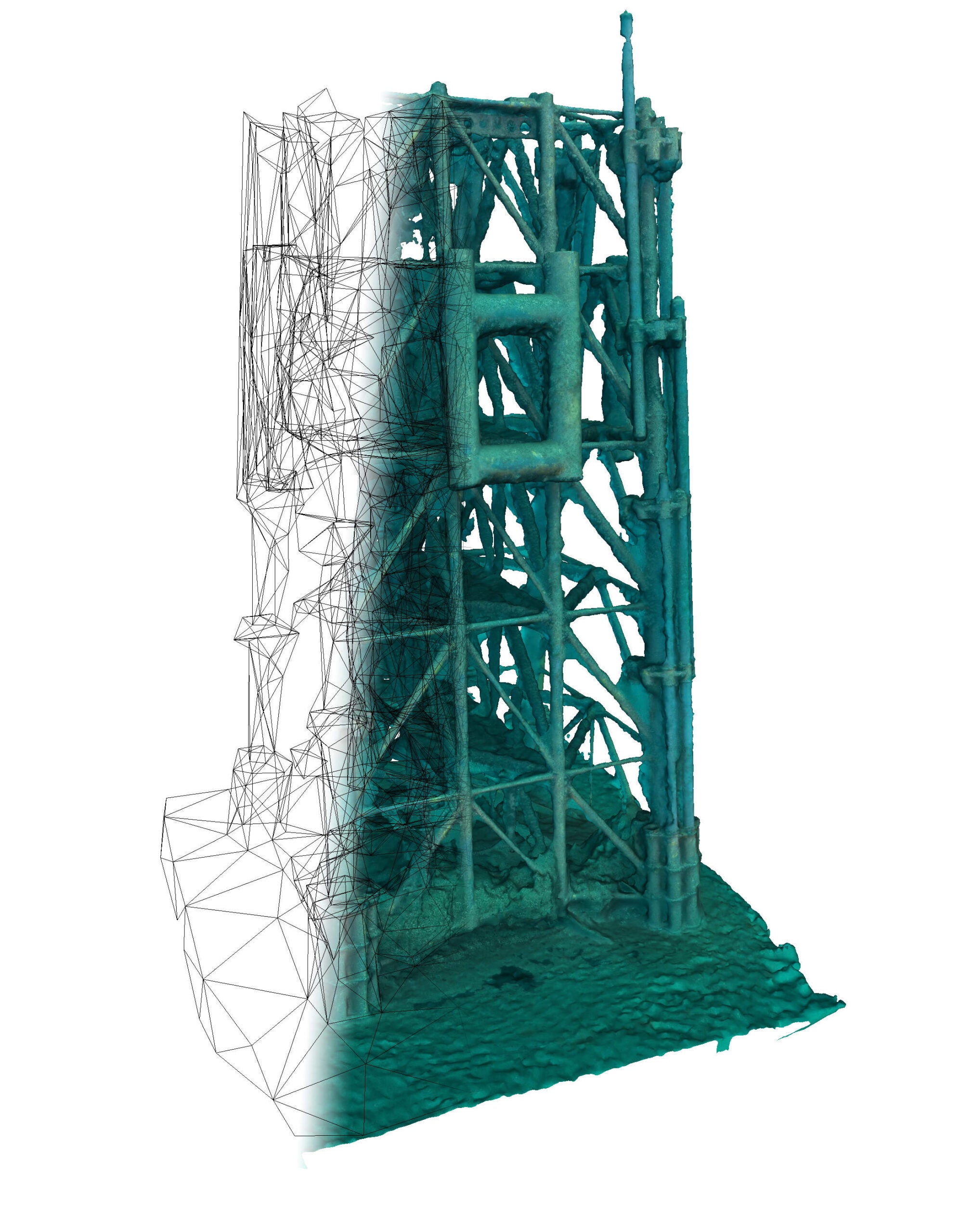
The wind turbine industry has become increasingly reliant on higher resolution images for offshore inspections. However, the existing evaluation techniques remain mostly limited to ground-based, high-res cameras, which can be expensive, time-consuming and lacking in consistency.
If the wind turbine market is to reach its full potential in the future, it will need to improve upon the technology currently on the market.
Innovate UK, the quango responsible for funding innovation and technology, is a strong proponent of 3D visualisation as means of enabling a fuller coverage of turbine structures.
At the start of this year, it was announced that the agency had given its financial backing to Bristol-based subsea technology company Rovco to help develop a new 3D visualisation system to better evaluate subsea jacket structures.
The project is comprised of two stages. First, Rovco will work in tandem with the Offshore Renewable Energy (ORE) Catapult on the developing software able to produce real-time 3D data from subsea conditions.
After this technology is trialled at ORE Catapult’s testing facility of Blyth, Scotland, the second phase of the project will see Rovco create a complete 3D-based offshore survey solution, based on artificial intelligence (AI).

US Tariffs are shifting - will you react or anticipate?
Don’t let policy changes catch you off guard. Stay proactive with real-time data and expert analysis.
By GlobalDataAccording to Rovco – a start-up launched in September 2016 – when the new technology hits the market, it could slash current offshore inspection costs by close to 80%. The generation of 3D data from remotely operated underwater vehicles (ROVs) could also mark a step change in the way energy companies both inspect and maintain their subsea assets.
Still in the early stages, Rovco is unsurprisingly keeping quiet over the patenting of the technology. But company CEO and founder Brian Allen took some time out to tell Ross Davies about the project and its goals.
Ross Davies (RD): When did Rovco first strike on the idea to develop a 3D visualisation system?
Brian Allen (BA): The thought process behind it was actually very simple. We are developing a live, 3D vision system for ROVs and autonomous and underwater vehicles (AUVs) because there currently isn’t one used by the industry.
Ultimately, we are looking to supersede and replace the laser systems currently used for inspections. We are looking to develop, if you will, the next technology past 3D laser scanning.
I have over 16 years subsea experience – including nine delivering multimillion underwater ROV projects around the globe for the oil, gas and renewables industries – so have been in in the industry a long time. I recognise the need for this technology.
RD: How is the project being funded?
BA: I’m afraid I can’t give too much away on this, as I know some of the larger players would love to know that information, in terms of cost profile and time to build.
But what I will say is that we have been awarded four UK Government grants to build this system, with each grant amounting to seven-figure sums. So, that’s over £2m. That includes full backing from Innovate UK, as well as from a couple of government grant bodies.
RD: What are the overall benefits the system could bring to the surveying of subsea structures?
BA: In bringing 3D vision to AUVs and ROVs, we are trying to develop a system to change the industry. In effect, what this means is that half your ship doesn’t need to be based on your ship anymore. The vast majority of your interested parties can be based in their offices at home, rather than on offshore vessels.
The benefits are clear in that it allows de-manning of the offshore environment, and mass reduction in terms of ship size.
We are also developing a system that’s required to make AUVs intelligent. So, instead of flying them point to point, we are giving them perceptions, memory and reasoning systems that enable the AUVs to actually understand and move around their environments.
RD: What kind of time frame do you have in mind for all of this?
BA: Well, the vehicles needed for this don’t exist yet, so what we are doing is building the intelligence and vision systems that will be able to fit onto these autonomous vehicles. Those vehicles should be arriving on the scene in around the next three to five years.
The idea is that our system will be able to plug into these new AUVs and make them useful in inspecting assets.
The interim step will be to build a system that increases the quality of the surveys that are released, while increasing the quality of the data output. We are combining 3D vision, deep learning, and a live eventing reporting system that allows compression and data transfer back to shore.
We are essentially using technology as a differentiator. Our system also replaces the multi-beam from an ROV as a means of surveying with millimetre, or sub-millimetre, perfect resolution.
RD: These must be exciting times for a company as small and as young as Rovco?
BA: Yes, definitely. We’re going through a huge amount of growth at the minute. We’ve gone from a small team to ten; we are actively hiring to grow to twenty. By the time this goes to market, we’ll have a team of 30 working on this entire set-up.
We are the only company building this integrated system. We are in the process of patenting all of our hardware and software. It’s not just a software system – it’s a hardware and software system. Both have to work together.



